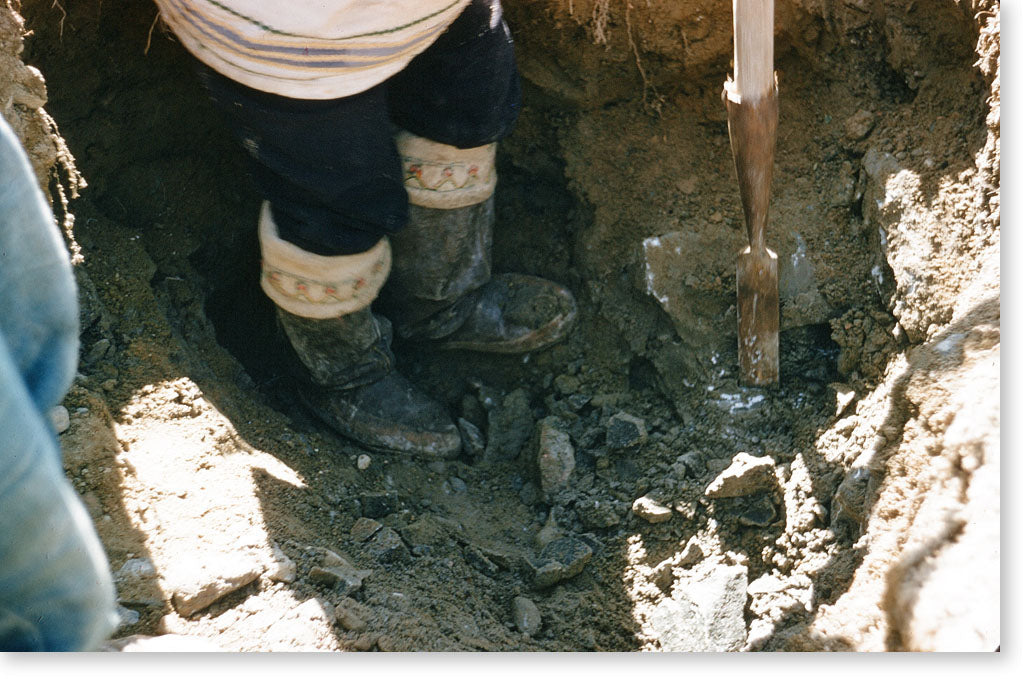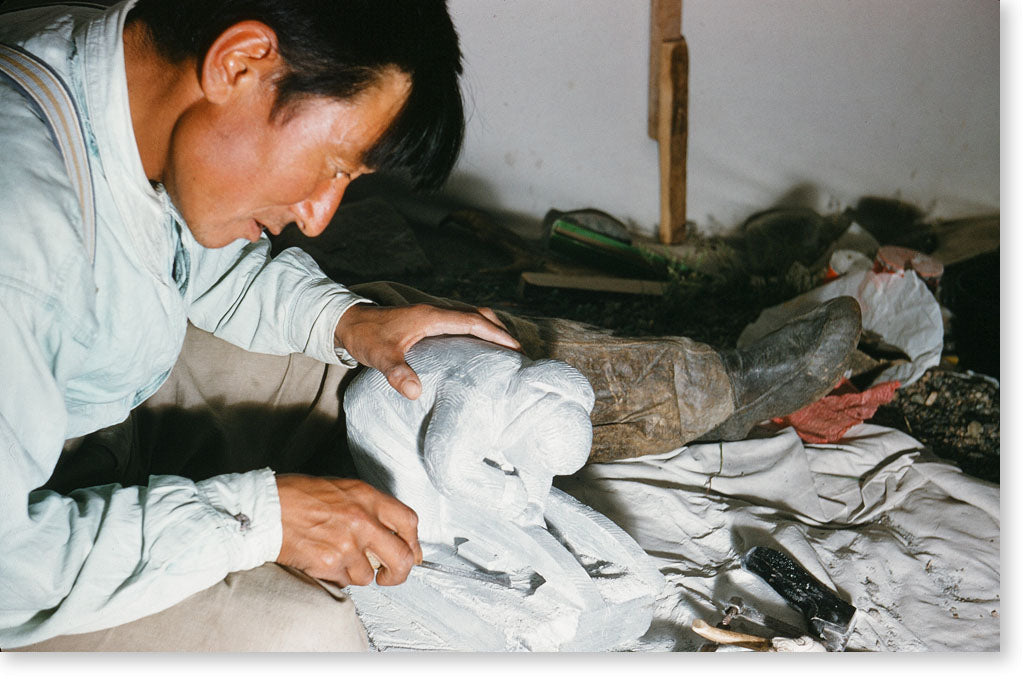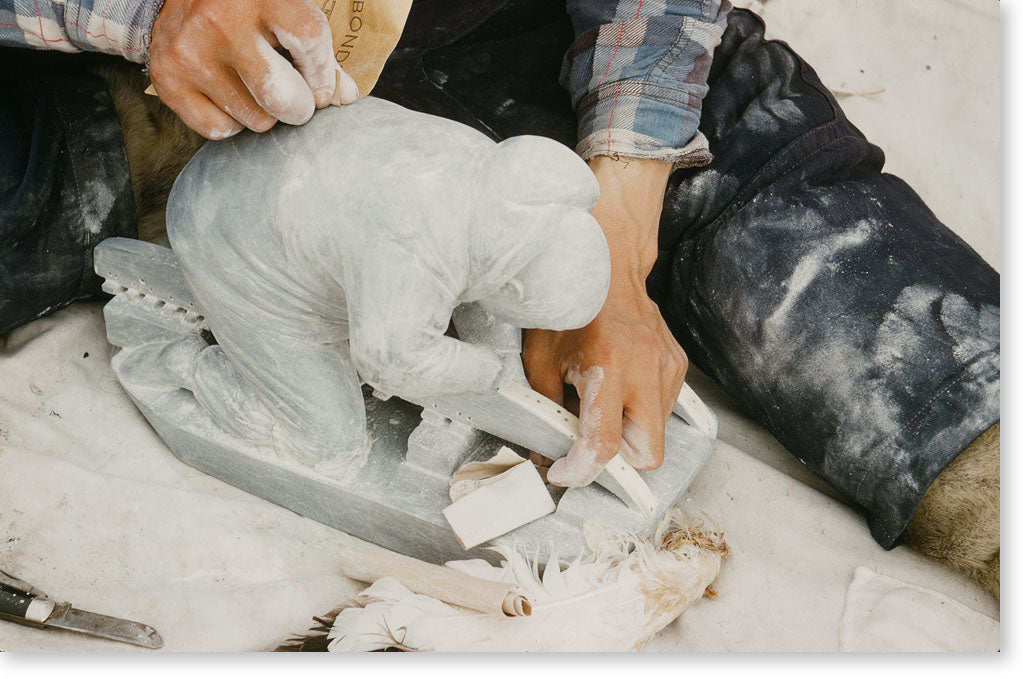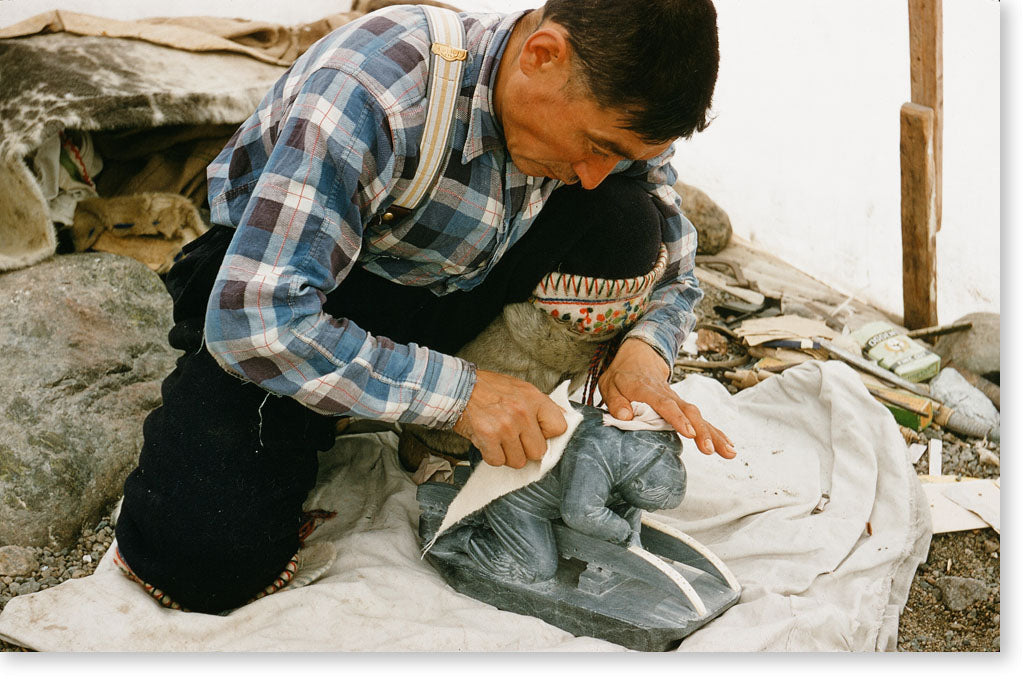
Finding stone
Artists obtain their stone by traveling by canoe or sled to quarries known to contain good quality stone. This one is very shallow and extracting carving stone by hand is relatively easy. Some quarries become deep pits after several years of use and extracting stone is then more difficult and dangerous. Carvers mining stone will often work in teams for security.

First step
Sculptors will bring back several pieces of stone from a mining trip. The shape of a block of stone often tells the artist what his subject might be. Useless parts are sawed or chopped off as a first step in the making of a sculpture.

A shape emerges
With a practiced hand, the artist will begin to chip away at the stone until a rough shape begins to appear. As work progresses, smaller carving tools made or modified by the artist to work the stone in constrained areas are used.

Cutting and shaping
Often, a lot of the work that will go into the making of a sculpture is in the detailing. This can start fairly early in the carving process. The stone being used here is steatite which is well suited to complex work. The artist is using a chisel to cut through and shape the stone.

Smoothing the stone
The sculptor has begun to smooth the stone with sandpaper. There are many steps to polishing as finer and finer grades of abrasive must be used in order to reveal the beauty of the stone. Bone pieces have been fitted to the runners of this piece in an effort to be as true to reality as possible.

Final polish
All the details have been added and the artist is giving the stone its final polish. It is hard to estimate the time needed to carve such a piece since artists will often make several smaller pieces as they work on a large one. This one was ready 6 weeks after the block it came from was first cut.

Artist : Aisa Koperqualuk
1916 – 2004
Photos: Peter Murdoch
